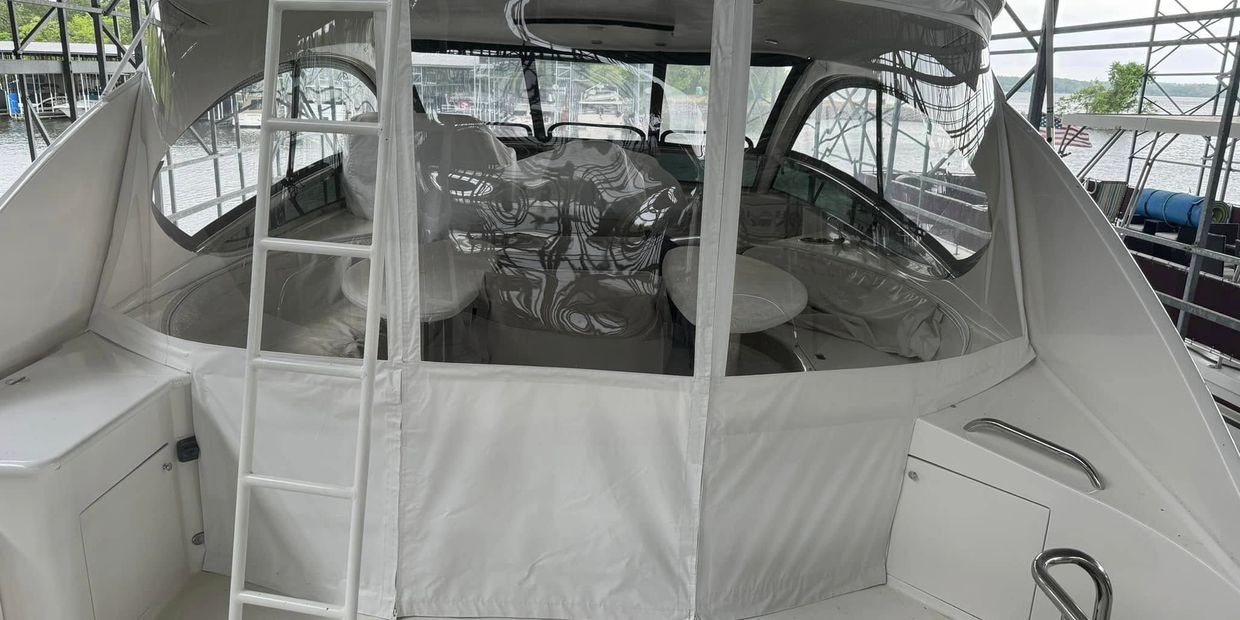Polly Carbonate GLass Care

Proper Cleaning, Care & Storage for Clear Polycarbonate on a Boat
+ Common Mistakes to Avoid
Clear polycarbonate (often branded as Lexan® or Makrolon® Marine) is a rigid, shatter-resistant plastic used for hatches, windshields, portholes, and instrument covers on boats. It's 250x stronger than glass, UV-resistant, and lightweight, but it's prone to scratching and hazing if not cared for correctly. Proper maintenance preserves its optical clarity and impact strength for 10–20+ years. Always test cleaners on a small area first. Guidelines based on marine experts (Practical Sailor, BoatUS, and polycarbonate manufacturers like SABIC).
Routine Maintenance (Weekly or After Every Use)
- Rinse Immediately: Use fresh water with low pressure (<40 PSI) to remove salt, bird droppings, pollen, or sand. Avoid high-pressure washers, which can scratch or warp edges.
- Wipe Gently: Use a soft microfiber cloth dampened with water or mild soap (e.g., 303 Marine Cleaner or Dawn® diluted 1:10). Wipe in straight lines (not circles) to prevent swirls. Dry with a clean microfiber or chamois.
- UV & Scratch Protection: Apply a dedicated plastic protectant like 303 Aerospace Protectant® or Star brite Plastic Polish monthly. Buff lightly to restore shine and repel contaminants. This prevents yellowing and minor scratches.
- Inspect Regularly: Check for scratches or cracks; buff out light ones immediately to avoid deepening.
Deep Cleaning (Every 1–3 Months or When Hazy)
- Prepare Solution: Mix mild soap (e.g., 303 Marine Cleaner) with lukewarm water (1 oz per gallon).
- Apply & Scrub: Spray on, let sit 1–2 minutes, then gently scrub with a soft microfiber or non-abrasive pad in one direction.
- Rinse Thoroughly: Flush with fresh water until no residue remains.
- Polish & Protect: Use a plastic polish (e.g., Meguiar's PlastX or 3M Marine Restorer) for haze removal, then apply UV protectant.
- Dry: Air-dry in shade or buff dry—never use heat.
For mildew: Diluted bleach (1:10) sparingly, rinse immediately, and retreat. For scratches: Light buffing with PlastX; deep ones require professional refinishing.
Storage Tips (Short-Term or Off-Season)
- Clean & Dry First: Always rinse and dry fully to prevent contaminant trapping.
- Protect from Elements: Cover with breathable, non-abrasive tarps (e.g., Sunbrella) to shield from sun, rain, or dust. Avoid tight plastic covers that trap moisture.
- On-Boat Storage: If left installed, loosen fittings slightly to allow air circulation. Use a dehumidifier in the cabin during humid seasons.
- Removal for Long-Term (Off-Season >30 Days): Remove panels if possible; store flat or vertically in a cool (50–80°F), dry (<60% RH) indoor space. Stack with soft padding (e.g., foam or microfiber) between layers to prevent scratches. Never fold or stack without protection.
- Pro Tip: Label storage areas "POLYCARBONATE – NO ABRASIVES – UV PROTECTED."
Common Products to Avoid on Polycarbonate
Polycarbonate's surface is soft and easily damaged by abrasives or chemicals that strip its UV coating.
Avoid these:
Product to Avoid: Why It Harms PolycarbonateSafer Alternative
Abrasive Pads (e.g., Scotch-Brite) Creates permanent scratches and haze. Soft microfiber cloth only.
Harsh Solvents (e.g., acetone, Windex®)Etches the surface, causing clouding.Mild soap + water or 303 Marine Cleaner.
Bleach/AmmoniaYellows and weakens UV protection.
High-Pressure Washers (>40 PSI)Scratches or cracks edges.Low-pressure hose.
Automotive Waxes (e.g., carnauba)Leaves residue that attracts dirt. Marine plastic polish like PlastX.
Bug Sprays with DEET/SunscreenEts pits quickly. Wipe off immediately.
7 Common Mistakes That Damage Polycarbonate on Boats
MistakeConsequenceHow to Fix/Prevent
1. Testing hardness with keys/tools Deep gouges that haze the view. Handle with clean hands; use dedicated cleaners.
2. Circular wiping motionSwirl marks from trapped grit. Straight lines only with microfiber.
3. Storing without UV protectant Yellowing and brittleness in 1–2 years. Reapply monthly; cover when moored.
4. Leaving exposed in winter: Cracking from freeze-thaw cycles. Remove or insulate; store indoors.
5. Using glass cleaners Streaky residue reduces clarity. Plastic-specific products only.
6. Stacking without padding Scratches from pressure points. Foam separators between panels.
7. Ignoring small scratches They deepen with UV exposure. Buff immediately with polish.
Pro Tip: Annual professional inspection for deep scratches or coating wear can save replacement costs (panels run $200–$1,000+). For brands like Lexan, and Marine 5.
This website uses cookies.
We use cookies to analyze website traffic and optimize your website experience. By accepting our use of cookies, your data will be aggregated with all other user data.